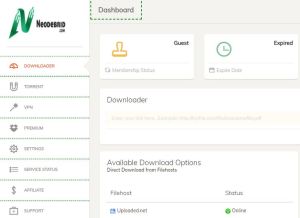In 2019, Elon Musk released an open letter about the financial problems at Tesla. In the text, he asked employees to rally and press on. But instead of a wow effect, the billionaire received reputational damage. Experts were outraged by both the wording and the timing of the message (Musk wrote it at 1 a.m.). Let’s find out how not to repeat Elon’s mistakes and write a motivational letter that works.
A motivational letter is a traditional format of communication between a company’s top management and personnel. The right messages can bring the two “poles” of the hierarchy closer together: according to statistics, employees with whom managers communicate regularly demonstrate greater involvement in the common cause.
World leaders do not hesitate to write a lot and on different occasions. The aforementioned Elon Musk, with varying degrees of success, directs the mood of his employees with the help of email and open appeals on his companies’ websites. And former PersiCo CEO Indra Nooyi sent more than 400 letters a year to the parents of her managers.
Table of Contents
Where to Start Preparing a Letter
Properly drafted motivational letters boost morale. But text alone doesn’t convey emotion or energy well. For the letter to resonate in the hearts of the employees, you need to prepare and get to know the team better.
Define Your Purpose
Motivational letters are written only with a specific goal in mind. For example, to explain how the company’s course or personnel policy will change, to unite the team in times of trouble, to make employees visit this online bookmaker, or to motivate for a particularly important project. The purpose will help determine both the structure of the text and its content.
Know Your Target Audience
Employees on opposite sides of the career ladder look at their contribution to the common cause differently. For example, referring to the losses of a funder is unlikely to motivate a courier whose income depends on the number of orders delivered. Focus on the needs of the audience. And if you can’t, use tricks. For example, billionaire Warren Buffett, when composing his annual message to investors, presents what he writes to his sisters Doris and Bertie. This helps make the text simple and understandable to all.
Predict the Expected Action
A good motivational letter spurs a change in job or world view. What should the employee do after reading it: throw all his energy into one project, be happy about the company’s success, or not quit his job if his salary is delayed? It is desirable to find an answer to this question before you press “Send”.
A motivational letter is a promotional message from an executive. Like classic TV and Internet ads, it “sells” a company, an idea, or an incentive to take a targeted action. What do you want your audience to do?
According to the canons of marketing, the text should have a CTA to persuade employees to change their behavior, to exceed the sales plan, and to win a contest.
Techniques to Make a Letter Motivational
Despite their different goals, executive letters are similar. In particular, they repeat rhetoric, style, referring to “we,” and mentioning customers and company values. Here are techniques proven by the world’s leaders in corporate communications.
Storytelling
The human brain stores information best in the format of stories. Use storytelling to help you reach your readers.
Sincerity and Emotion
The more human and empathic you are, the stronger the result of postal communication.
Instead of Names, Use Departments
Addressing individuals will make parts of the team stand out unpleasantly. Praise can make other team members jealous, public criticism can strike at the recipient’s motivation. If you want to reflect personal contributions, write about departments.
No to Clichés and Clericality
A motivational letter is the same text as an article or book. Clericality and complicated expressions make it incomprehensible, and reading such a letter is torture.
How to Measure the Effectiveness of a Letter
The best result of the letter: the plan was fulfilled, the important client did not leave, and the corporate messenger was flooded with emoticons. If this did not happen or the letter did not involve specific actions, pay attention to HR metrics:
- eNPS index. The employee satisfaction questionnaire can include several questions about the quality of communication. For example: “Do you get enough information from company management?”, “Which channels of information are more convenient for you?”, etc.
- Conversations with ambassadors and opinion leaders. If emails and content have caused confusion, employees will usually discuss it in the smoking rooms.
- Direct employee surveys. After big meetings and infomercials, it makes sense to poll employees about what they think of management’s messages.
The coolest effect of a letter is when your employees themselves come up and say it inspired them. If there’s an open relationship between the supervisor and the manager, it’s not flattery, but objective feedback. These words drive the manager himself, he understands that he has done something right and special.


















